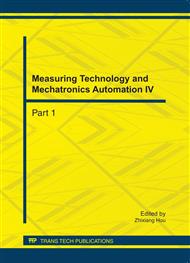p.1197
p.1202
p.1213
p.1217
p.1222
p.1226
p.1230
p.1234
p.1238
Simulation and Analysis on Vehicle Frontal Crash Based on Virtual Proving Ground
Abstract:
Based on the vehicle crash finite element theory and the virtual proving ground (VPG), vehicle frontal crash is simulated. Under the VPG environment, the unit element meshes are determined for the entire vehicle CAD model, whereas the element types and material parameters, together with welding nodes, contacts and constraints are defined. According to the ECER94 safety regulations, a rigid wall model, along with initial crash conditions is established. By calling the LS-DYNA, the simulation model is calculated and the stress distribution, vehicle body aberration nephogram, energy and acceleration curves are attained. Afterwards, the vehicle crash safety performance is obtained through simulation. Therefore, this approach sets a reference for vehicle mass assessment.
Info:
Periodical:
Pages:
1222-1225
Citation:
Online since:
October 2011
Authors:
Keywords:
Price:
Сopyright:
© 2012 Trans Tech Publications Ltd. All Rights Reserved
Share:
Citation:


